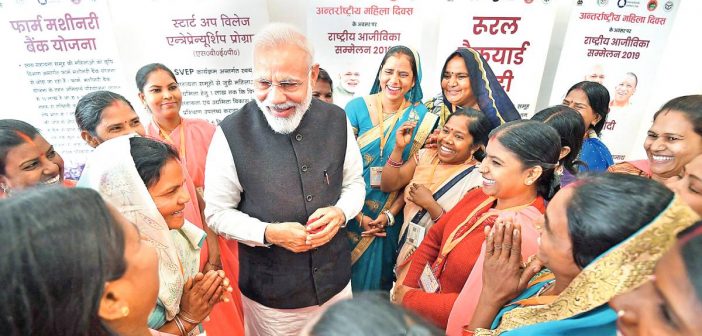Since taking office in 2014, Prime Minister Narendra Modi has placed a strong emphasis on women’s empowerment, recognizing their crucial role in India’s social and economic development. This article explores various initiatives and programs launched by the Indian government under his leadership to address gender disparity across critical areas like education, financial inclusion, safety, and closing the wage gap.
Education: Building a Brighter Future
One of the cornerstones of empowerment is access to education. The Beti Bachao Beti Padhao (Save the Girl Child, Educate the Girl Child) scheme, launched in 2015, tackles the historical societal preference for sons. It aims to improve the sex ratio at birth, ensure education for girls, and change social attitudes. Schemes like Sukanya Samriddhi Yojana provide financial support for a girl child’s education, encouraging families to prioritize their daughters.
Financial Inclusion: Expanding Opportunities
Economic independence is key to women’s empowerment. The Pradhan Mantri Jan Dhan Yojana has opened millions of bank accounts for women, facilitating access to financial services and credit. Initiatives like Stand-Up India provide loans and support to women entrepreneurs, fostering self-reliance and business ownership.
Skill Development: Bridging the Gap
Equipping women with marketable skills is crucial for workforce participation and equal pay. The Skill India Mission focuses on training women in various sectors, from traditional crafts to Information Technology. The Mahila Shakti Kendra (MSK) scheme provides skill development training at the village level, empowering rural women with income-generating skills.
Safety and Security: Creating a Fearless Environment
Women’s safety remains a critical concern. The One-Stop Centre (OSC) scheme provides integrated support to victims of violence, with facilities for medical aid, legal assistance, and counseling under one roof. The Emergency Response Support System (ERSS), a pan-India helpline number, empowers women to report violence and access help. Initiatives like Mission Shakti (Empowerment Force) focus on community policing and women’s self-defense training, creating a more secure environment.
Closing the Gender Wage Gap: A Level Playing Field
The gender pay gap persists in India. To address this, the government amended the Minimum Wages Act to ensure equal pay for equal work. Promoting women’s participation in high-skilled sectors like science, technology, engineering, and mathematics (STEM) is another crucial step.
Beyond Government Initiatives: Fostering Change
The government’s role extends beyond launching schemes. Campaigns like “Beti Zindabad” (Long Live Daughters) and “He for She” promote positive messaging around gender equality and encourage men to become allies in women’s empowerment. Additionally, initiatives like the “Digital Shakti” program aim to bridge the digital gender divide, equipping women with digital literacy skills to better navigate the online world.
Challenges and the Road Ahead
Despite significant progress, challenges remain. Deep-rooted social norms and cultural practices continue to hinder progress. Ensuring effective implementation of schemes on the ground-level, particularly in rural areas, requires constant monitoring and evaluation.
Conclusion: A Collective Effort for a Brighter Future
The Indian government’s focus on women’s empowerment under Prime Minister Modi is a significant shift. These initiatives have the potential to create a more equitable and prosperous future for women in India. However, achieving lasting change requires a collective effort. Continuous collaboration between the government, NGOs, civil society organizations, and the private sector is crucial. Ultimately, empowering women strengthens families, communities, and the nation as a whole. By working together, India can truly unleash the “Shakti” (power) of its women.





